This article was co-authored by Mohiba Tareen, MD. Mohiba Tareen is a board certified Dermatologist and the founder of Tareen Dermatology located in Roseville, Maplewood and Faribault, Minnesota. Dr. Tareen completed medical school at the University of Michigan in Ann Arbor, where she was inducted into the prestigious Alpha Omega Alpha honor society. While a dermatology resident at Columbia University in New York City, she won the Conrad Stritzler award of the New York Dermatologic Society and was published in The New England Journal of Medicine. Dr. Tareen then completed a procedural fellowship which focused on dermatologic surgery, laser, and cosmetic dermatology.
This article has been viewed 47,044 times.
Burning yourself on the oven is annoying at best, painful at worst. It even happens to top chefs! Fortunately, you can treat most first- or second-degree burns at home.
Things You Should Know
- If you have a first-degree or mild second-degree burn, run cool water over it for at least 10 minutes to help relieve the pain and swelling.
- Once you start to feel better, gently pat the burn dry with a clean towel and coat the area with aloe or petroleum jelly.
- Go to the emergency room if the burn looks thick, leathery, charred, or white.
Steps
Treating the Burn Yourself
-
1Treat the burn if its first- or second-degree. There are three degrees of burns, classified by severity (as in, how deep the burn goes under the skin).
- First-degree burns are superficial skin burns that are dry, red, and usually do not blister.[1] Mild sunburns are examples of first-degree burns, and these can be treated at home.
- Second-degree burns are more severe than first degree, penetrating past the first layer of skin. These burns are red, blistered, swollen, and usually painful.[2] Some second-degree burns can be treated at home—for example, a severe sunburn from a day at the beach.
- Third-degree burns are much more severe than second degree burns, destroying the first layer of skin and most of the layers underneath. These burns are white and charred.[3] Nearly all third-degree burns must be treated by a medical professional.
-
2Remove clothing on or around the burn. Start by removing any clothing or jewelry on or around the burn carefully. A burn can start to swell immediately, so the faster you treat it, the better.[4]Advertisement
-
3Run cool water over a first-degree burn for about 10 minutes. Make sure the water is cool, not cold! Cool water will help reduce swelling and any pain.
-
4
-
5Keep your burn out of the sun. Use a clean adhesive bandage to cover the burn when you go outside. This will prevent more damage to your skin, and help the burn heal faster.
Seeking Medical Attention
-
1Find medical attention immediately for a severe burn. If the burn is thick, leathery, or your skin chars white, you most likely have a severe second- or third-degree burn.
- Make sure to head to the nearest emergency medical facility immediately, or call your local emergency providers.[9]
-
2Seek medical attention if the burn does not fade. If you’ve been treating it for two weeks and it doesn’t fade, your burn might be more severe than you originally thought.[10]
-
3Go to the doctor if your burn causes additional symptoms. If you experience symptoms such as increased pain, increased redness, trouble breathing, or the burn begins to ooze, these could be signs that your burn is more severe than a first-degree burn.[11]
Expert Q&A
-
QuestionHow can I treat a burn scar?
 Mohiba Tareen, MDMohiba Tareen is a board certified Dermatologist and the founder of Tareen Dermatology located in Roseville, Maplewood and Faribault, Minnesota. Dr. Tareen completed medical school at the University of Michigan in Ann Arbor, where she was inducted into the prestigious Alpha Omega Alpha honor society. While a dermatology resident at Columbia University in New York City, she won the Conrad Stritzler award of the New York Dermatologic Society and was published in The New England Journal of Medicine. Dr. Tareen then completed a procedural fellowship which focused on dermatologic surgery, laser, and cosmetic dermatology.
Mohiba Tareen, MDMohiba Tareen is a board certified Dermatologist and the founder of Tareen Dermatology located in Roseville, Maplewood and Faribault, Minnesota. Dr. Tareen completed medical school at the University of Michigan in Ann Arbor, where she was inducted into the prestigious Alpha Omega Alpha honor society. While a dermatology resident at Columbia University in New York City, she won the Conrad Stritzler award of the New York Dermatologic Society and was published in The New England Journal of Medicine. Dr. Tareen then completed a procedural fellowship which focused on dermatologic surgery, laser, and cosmetic dermatology.
FAAD Board Certified Dermatologist It depends on the age of the burn scar. If it's an acute, new scar, silicone sheets are very helpful. These are available over-the-counter and will help the scar flatten out and appear less red. If the burn scar is older, laster treatment has been shown to be very effective.
It depends on the age of the burn scar. If it's an acute, new scar, silicone sheets are very helpful. These are available over-the-counter and will help the scar flatten out and appear less red. If the burn scar is older, laster treatment has been shown to be very effective.
References
- ↑ https://www.urmc.rochester.edu/encyclopedia/content.aspx?ContentTypeID=90&ContentID=P09575
- ↑ https://www.urmc.rochester.edu/encyclopedia/content.aspx?ContentTypeID=90&ContentID=P09575
- ↑ https://www.urmc.rochester.edu/encyclopedia/content.aspx?ContentTypeID=90&ContentID=P09575
- ↑ https://www.mayoclinic.org/diseases-conditions/burns/symptoms-causes/syc-20370539
- ↑ https://www.aad.org/public/skin-hair-nails/injured-skin/burns
- ↑ https://www.summitmedicalgroup.com/library/adult_health/aha_first_aid_for_second-degree_burns/
- ↑ https://www.aad.org/public/skin-hair-nails/injured-skin/burns
- ↑ https://kidshealth.org/en/parents/burns.html
- ↑ https://www.mayoclinic.org/diseases-conditions/burns/symptoms-causes/syc-20370539
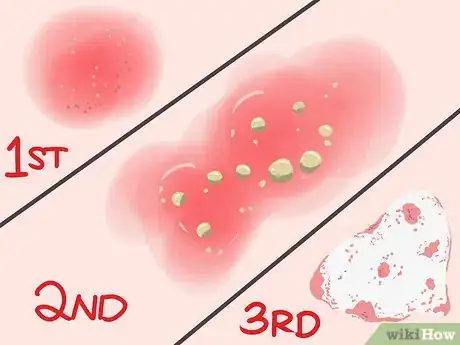
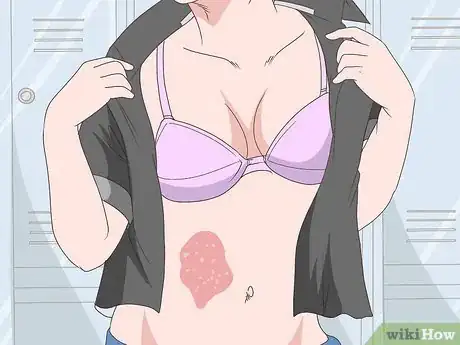
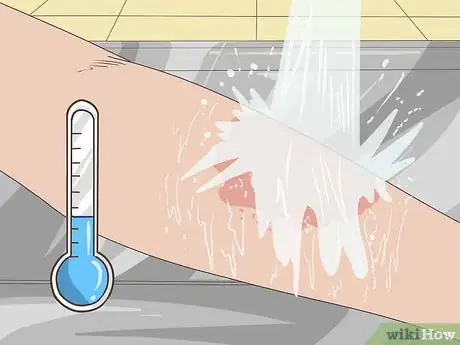
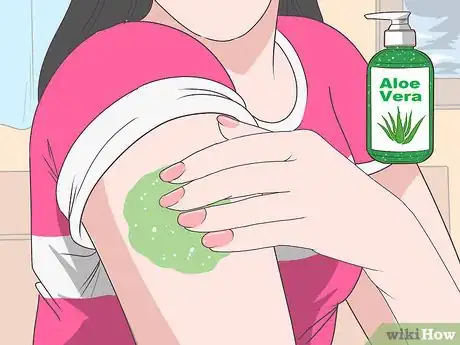

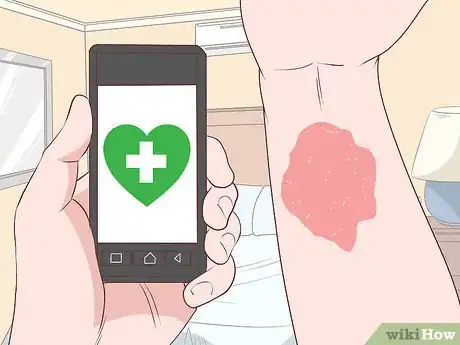
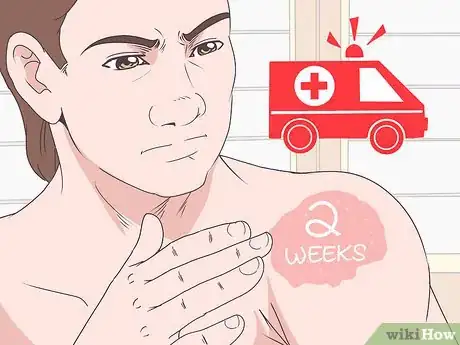

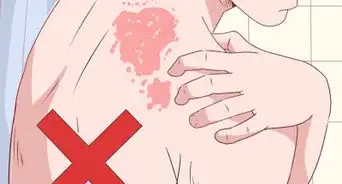





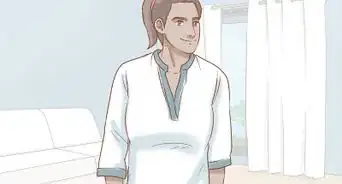
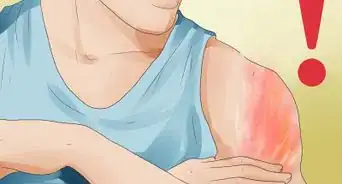
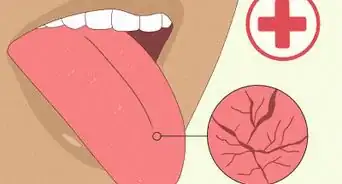
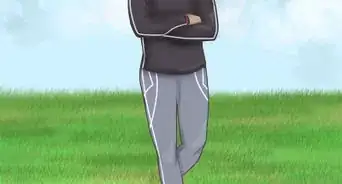
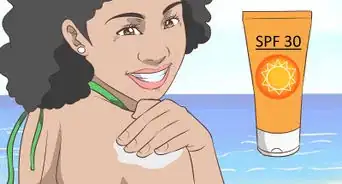
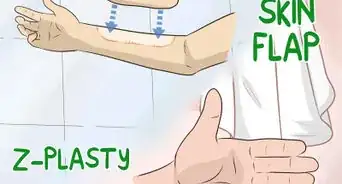

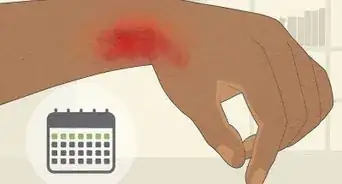







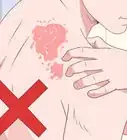

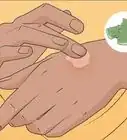




































Medical Disclaimer
The content of this article is not intended to be a substitute for professional medical advice, examination, diagnosis, or treatment. You should always contact your doctor or other qualified healthcare professional before starting, changing, or stopping any kind of health treatment.
Read More...